Winter has finally arrived. The drop in temperature over just two days felt brutal. We have gone from mild, sunny autumn days to dull days with temperatures sometimes in the single figures (Centigrade!) – still no frost yet.
My liquidambar has lost most of its leaves now without producing spectacular bright red leaves but yellow/orange is good too. I’m pleased with the Cornus alba doing its bit on the left to add a bit of red for the autumn.
I planted four scarlet willows (Salix alba “Chermesina”) to provide a blaze of red stems in autumn and through winter. Well, they are not quite there yet but I am pleased that they have all taken and seem to be quite happy.
The fuschias are still providing lots of colour and don’t even look tired.
But I still come back to the humble cotoneasters for the best show.
And I noticed today that the berries are starting to go missing so they also provide a good winter food for the birds.
A flash-back to last May and the cotoneaster in the front garden and you can see what a useful plant this is.
It was only nine degrees in the garden this afternoon but the bumble bees were happy on the winter flowering honeysuckle …
and on the salvia, but it was too cold for the honey bees to put in an appearance.
I enjoyed watching, what I think must bee a buff-tailed queen, sunning herself on the ground where she was sheltering at the base of a plant.
She had been feeding on the winter honeysuckle and in consequence got covered in pollen and felt the need for a good grooming. She will not need the pollen until next spring when she starts her first nest.
This morning my husband grabbed his camera and shouted for me to look at what was on the patio.
This is a red-legged partridge (Alectoris rufa) and a new visitor to our feeding station. I had a good idea where he had come from. I checked with my neighbour and not too long ago partridges had been released for hunting purposes.
However, this is a lucky one – well for the moment- the season is closed now and it will be safe to eat at our bird feeder. Mmm. just how much wild bird food can a large partridge eat?

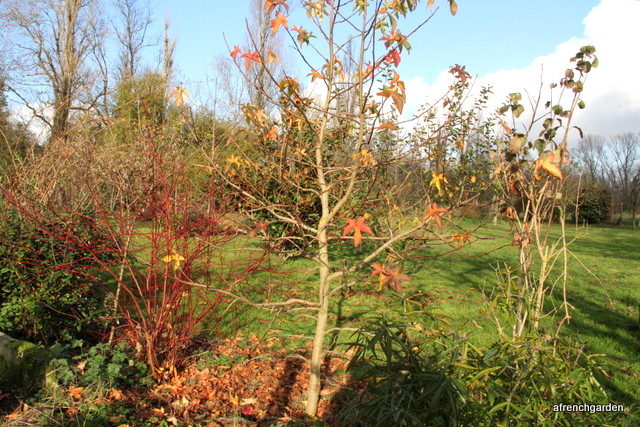
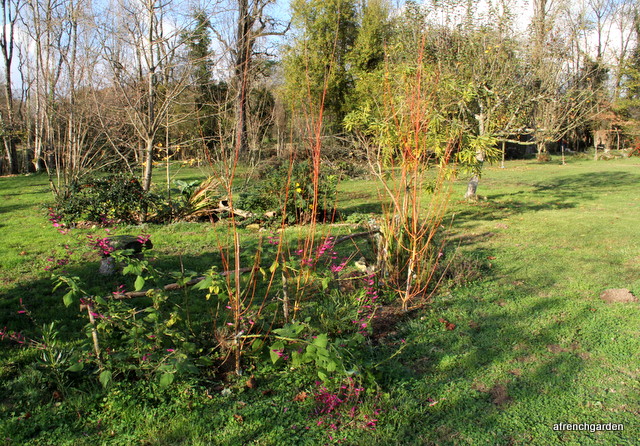
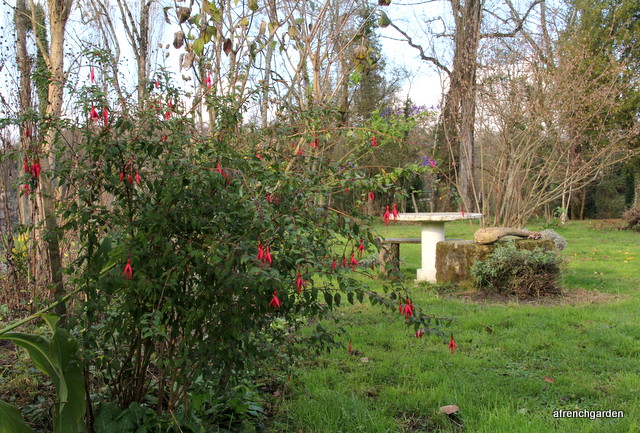

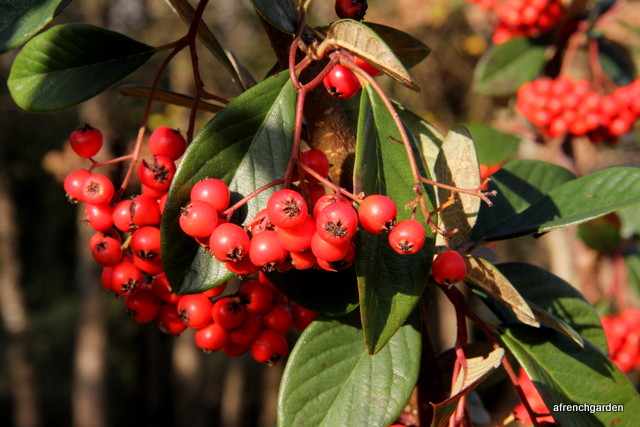

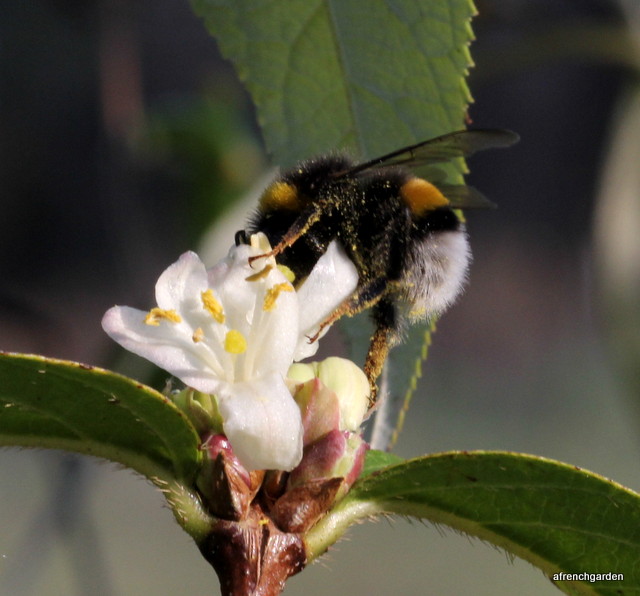
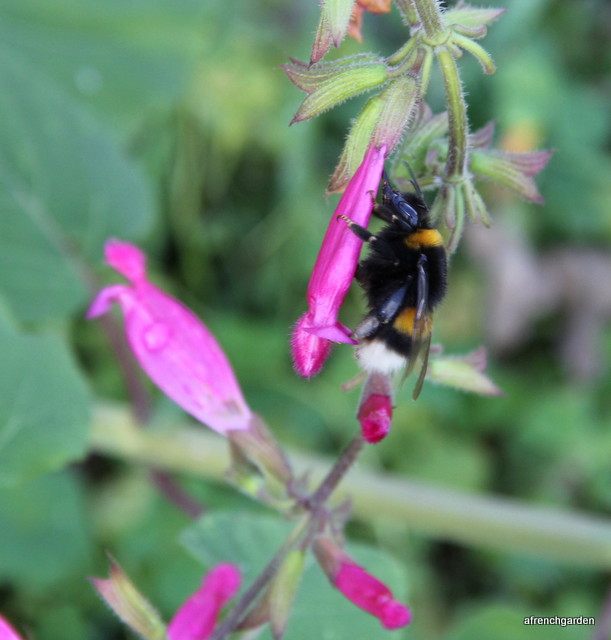
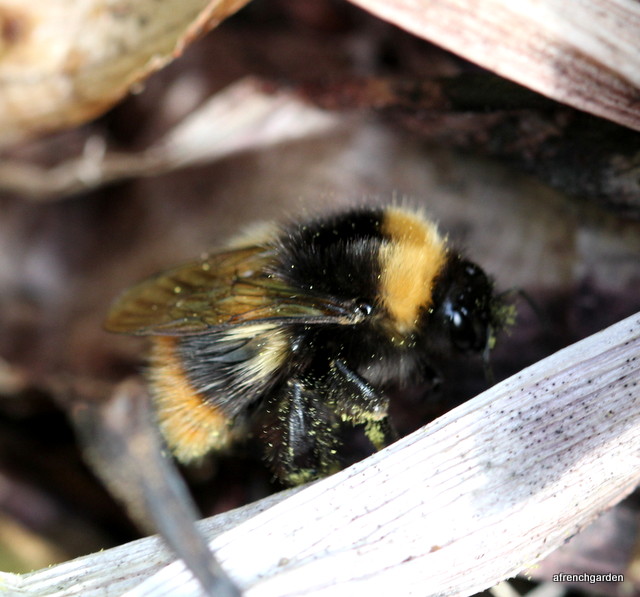
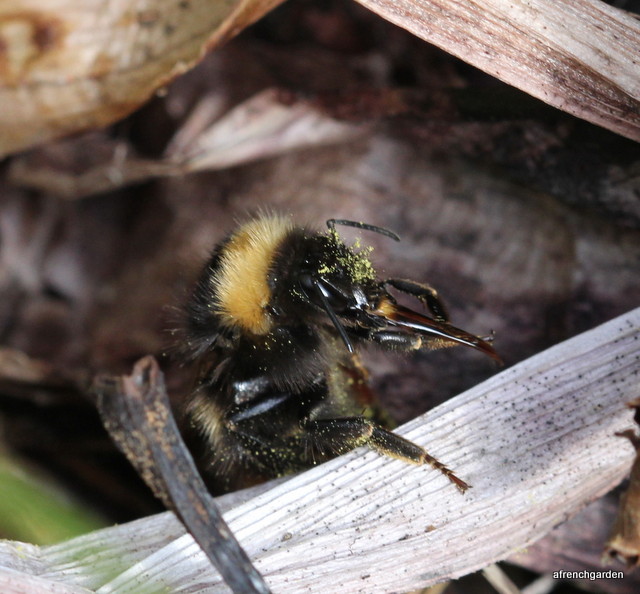
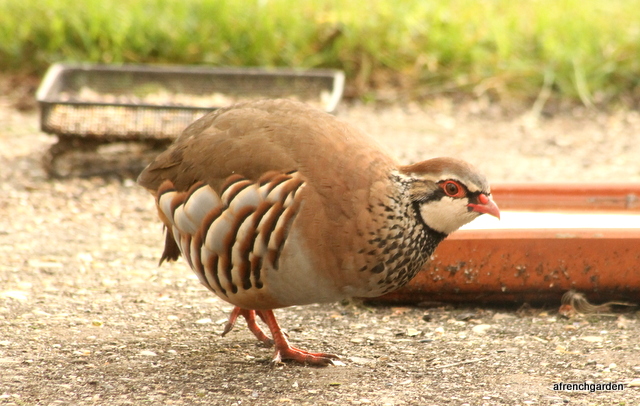
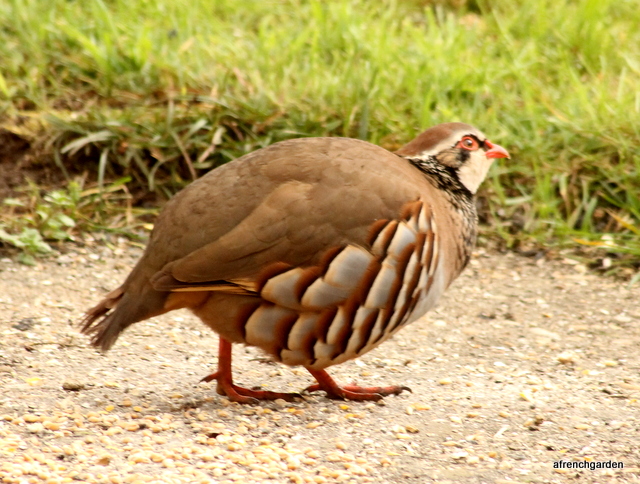
Oooh, the partridge rounds out your seasons, bees and bugs in summer, wild birds to carry you through the leaner months.
LikeLiked by 1 person
It always seems to be my husband that sees the interesting birds. Last night he disturbed a barn owl when he went outside to get more logs. Amelia
LikeLiked by 1 person
“It was only nine degrees in the garden this afternoon“….
positively balmy…
we’ve had three and a half almost all day…
then it went down!!
I have never objected to cold…
clear & crisp you can dress against…
this continual mizzle gets through every layer!!
Nice to see bumbles still at play…
it must be the fur coats!!
And we haven’t had any partridge around here for a couple of years…
ever since they had a moratorium on hunting them and peasants…
sorry… pheasants….
to allow numbers to build back up!!
We have heard a few calls this year, that’s all…
and we heard quail this summer.
LikeLiked by 1 person
A little bit further south and beside the sea must make all the difference. Amelia
LikeLike
Tim: bumbles can heat themselves up by vibrating. Hold one in your hand and stroke it and you can feel it, or capture it in a specimen tube and feel the glass after just a few minutes.
I’ve seen quite large family groups of partridges near my butterfly transects in late summer this year.
LikeLiked by 1 person
Thanks for the bumble info, Susan. I think they must also sunbathe, a bit like lizards do, to warm up in the sun if they can find a sheltered sunny spot. Amelia
LikeLike
Yes I think they sunbathe too.
LikeLike
The partridge is a beautiful bird. And well fed, by the looks!
LikeLiked by 1 person
It certainly is well-fed now! 🙂 Amelia
LikeLike
I always want to tell the pheasants in the garden not to go out into the surrounding fields at this time of year. Shooting season is in full swing here. D
LikeLiked by 1 person
Interesting, it seems from the comment above that there must be some local control by the hunting groups on what and when you can shoot. Amelia
LikeLike
Amelia: every year each prefect sets the dates and the species that can be hunted, in consultation with the FdC. We have bans on hunting hares and several species of bird this year.
LikeLike
Thank you for that, Susan. 🙂
LikeLike
What a fine plump partridge. Lucky indeed to have found your garden.
LikeLiked by 1 person
Missed our pear tree, though! Amelia
LikeLike
I love your bumble bee all covered in pollen and what an adorable partridge.
Nine degrees sounds positively balmy to me as it has turned very cold here. Only 3 degrees today although it is nice and sunny today. I don’ t mind cold but constant gloom is depressing.
LikeLike
Today we got our first frost but it is sunny! I prefer braving the cold in return for some sunshine. Amelia
LikeLike
The partridge photos are amazing.
LikeLike
I have got to thank my husband for those. He is the one that looks after the birds more and seems to spot them before I do. Amelia
LikeLiked by 1 person
There’s a gamebird farm near us – it looks like a prison for birds. One year a troupe of them came into the garden and milled around at the beginning of the hunting season. People shoot them, but you can walk right up to them. I hope yours bird stays put! They are beautiful.
LikeLike
If he becomes a frequent visitor I think we’ll have to buy more bird food! 🙂 Amelia
LikeLike
I think you may have to stock up on food, that partridge looks like he eats a lot.
LikeLike
I can imagine the little blue tits ganging up on him to chase him away if he eats too much :). Amelia
LikeLike
We too have had a cold snap with a few days of morning frost so the weather has finally changed. No partridges though!
LikeLike
I’m quite happy to have the cold now that it is nearly Christmas. I have also learnt this year that many trees have a requirement of a certain period of low temperature (depending on the trees). We had an exceptionally mild winter last year but I don’t think it was particularly beneficial for the trees or the garden. Amelia
LikeLike
We do need a little winter cold to control some of the garden pests and to stop everything from flowering too early! The bees here are still busy, the honey bees come to the Arbutus but mainly solitary bees.
LikeLike
I’ve no flowers this year on what is left of the Arbutus. 😦
LikeLike
I love to see partridges in the garden. Lucky you and lucky him. I think you might find that you will be getting through rather a lot of food now. I think they mate for life, I think so anyway I hope his mate joins him in the garden soon. ps I have no idea if your visitor is male or female, just guessing.
LikeLike
I think it is a male but but I am not absolutely sure. Thinking of the quantity of birdseed that he is consuming I am not sure that I am looking forward to him inviting his mate for dinner. Amelia
LikeLike
So much life and colour in winter – beautiful 🙂
LikeLike
Thank you, we are spoiled here as the cold and gloom does not hang around for too long at a time. Amelia
LikeLike
Pingback: Summer visitors | a french garden